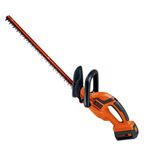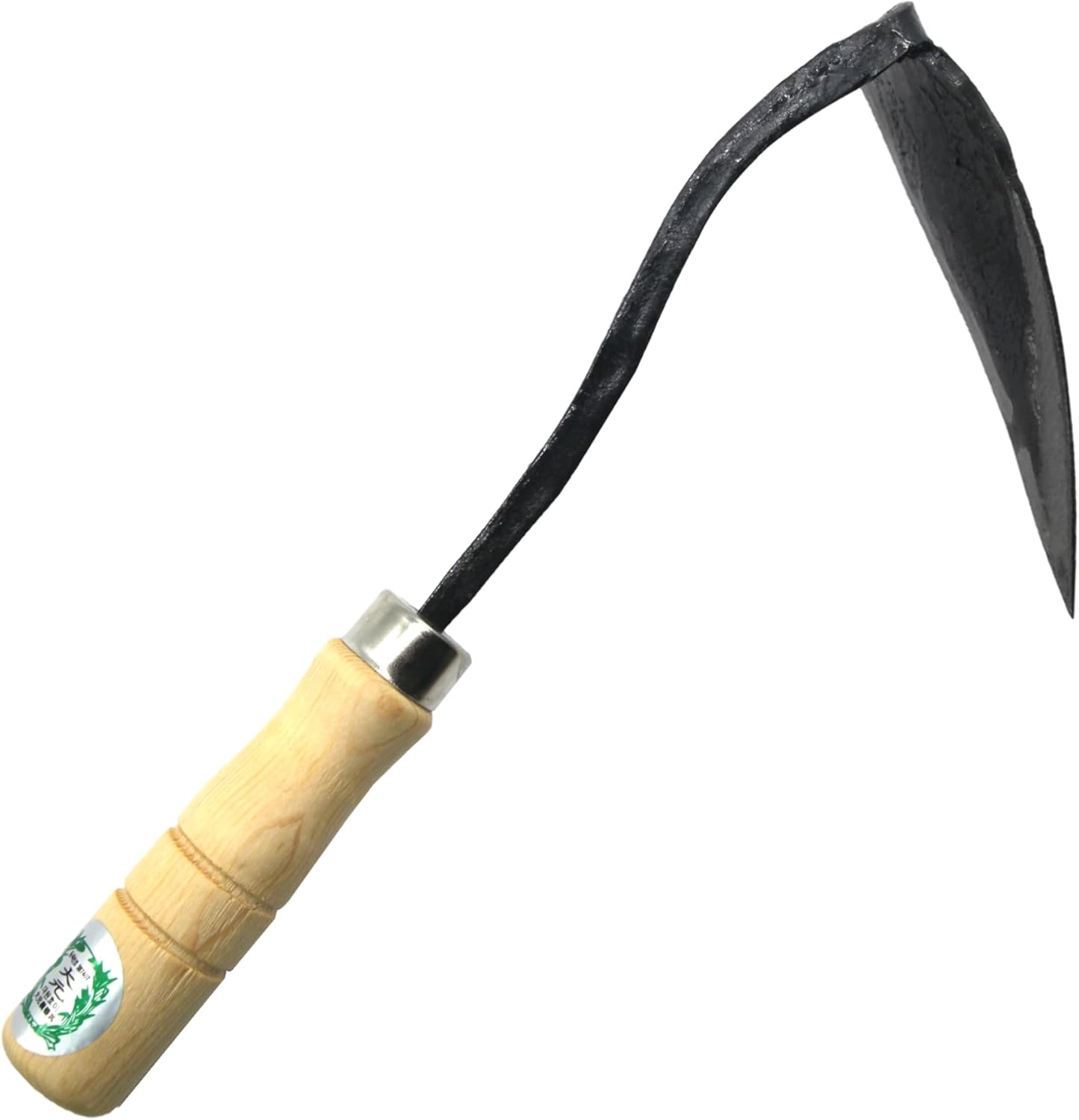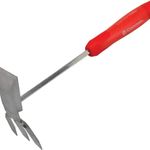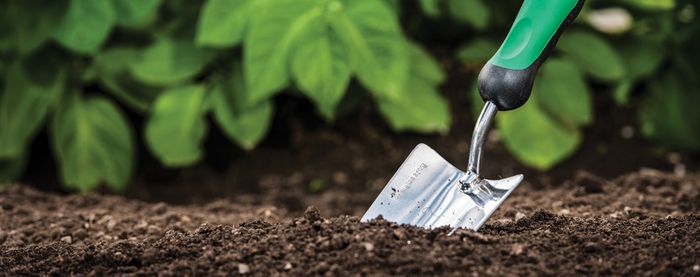Six Tips for Effective Weed Control
Here are proven methods for controlling weeds in your garden

If you were to track every hour spent in your garden, you would probably find that you do an inordinate amount of weeding. And while the first few weeks of tearing up these intruders can prove mildly satisfying, the chore soon wears thin. Even more maddening—you are just six simple strategies away from your garden not needing weeds anymore.
Learn more: Tips for Getting Weeds Under Control Early
What’s that? A garden needs weeds? Weeds are nature’s healing remedy for sites that are in a wounded, plantless state, but weeds and gardeners have different ideas of what makes for a good recovery. Armed with a better understanding of weeds and the strategies outlined here, you can win every future skirmish, giving you more time to enjoy your well-groomed garden.
1. Let sleeping weeds lie

Every square inch of your garden contains weed seeds, but only those in the top inch or two of soil get enough light to trigger germination. Digging and cultivating brings hidden weed seeds to the surface, so assume weed seeds are there ready to erupt, like ants from an upset anthill, every time you open a patch of ground. Dig only when you need to and immediately salve the disturbed spot with plants or mulch.
In lawns, minimize soil disturbance by using a sharp knife with a narrow blade to slice through the roots of dandelions and other lawn weeds to sever their feed source rather than digging them out. Keep in mind that weed seeds can remain dormant for a long, long time.
2. Mulch, mulch, mulch

Mulch benefits plants by keeping the soil cool and moist and depriving weeds of light. Organic mulches, in particular, can actually host crickets and carabid beetles, which seek out and devour thousands of weed seeds.
Some light passes through chunky mulches, and often you will discover—too late—that the mulch you used was laced with weed seeds. It’s important to replenish the mulch as needed to keep it about 2 inches deep (more than 3 inches deep can deprive soil of oxygen). In any case, you can set weeds way back by covering the soil’s surface with a light-blocking sheet of cardboard, newspaper, or biodegradable fabric and then spreading prettier mulch over it.
If you choose to use this method on seldom-dug areas, such as the root zones of shrubs and trees, opt for tough landscape fabric for the light-blocking bottom sheet. There is a catch, however: As soon as enough organic matter accumulates on the landscape fabric, weed seeds dropped by birds or carried in on the wind will start to grow. For the bottom layer of fabric to be effective, these must be pulled before they sink their roots through and into the ground.
Monday: Kill weeds. Tuesday: Kill weeds …
If you’re a new gardener—or you’re working in a wild and weedy space—the first season will likely be a rough one. Commit (and stick) to a weeding schedule, and don’t take on more space than you can manage. If you have more weeds than you can handle, keep weedy areas mowed until you’re ready to conquer them.
3. Weed when the weeding’s good

The old saying “Pull when wet; hoe when dry” is wise advice when facing down weeds. After a drenching rain, stage a rewarding weeding session by equipping yourself with gloves, a sitting pad, and a trug or tarp for collecting the corpses. As you head out the door, slip an old table fork into your back pocket because there’s nothing better for twisting out tendrils of henbit or chickweed. When going after bigger thugs, use a fishtail weeder to pry up taprooted weeds, like dandelion or dock.
Under dry conditions, weeds sliced off just below the soil line promptly shrivel up and die, especially if your hoe has a sharp edge. In mulched beds, use an old steak knife to sever weeds from their roots, then patch any open spaces left in the mulch.
Heat is the key to composting weeds
Few experiences compare to the joy of watching weeds shrivel in the sun after a morning weeding session, but then what should you do with them? Their best resting place, of course, is a compost pile or bin, which is the end of the story if the weeds going in are free of seeds. In reality, however, a good half of the weeds you pull probably hold seeds. Separating the seedies from other weedies is impractical, so weed seeds in compost are customarily killed by raising the temperature in the heap.
Keep it hot. Running a hot heap calls for precise mixing and remixing of materials. Rather than struggle to heat up a heap that wants to run cold, I suggest waiting until a weedy heap reaches a nearly rotted state to set things right. From there, you can solarize small batches of moist compost in black plastic nursery liners that are enclosed in clear plastic bags and placed in the sun for two to three days.
Now you’re cooking. Easier than solarizing, plug in an old Crock-Pot outdoors, turn it to its lowest setting, and warm batches of compost while you sleep (three hours at 160°F kills most weed seeds).
Heat treating weedy compost destroys many of the microscopic life-forms that give compost its punch, so it’s a good idea to reprocess cooked compost for two to three weeks before using it in the garden. Place it in a plastic storage bin with a handful of earthworms borrowed from your garden and it will soon be laced with humic acids and other plant-pleasing compounds.
4. Lop off their heads

When you can’t remove weeds, the next best thing is to chop off their heads. With annual weeds, deadheading buys you a few weeks of time before the weed “seed rain” begins. Cutting back the tops of perennial weeds, like bindweed, reduces reseeding and forces them to use up food reserves and exhaust their supply of root buds, thus limiting their spread.
You will need pruning loppers to take down towers of ragweed or poke, or you can step up to a string trimmer equipped with a blade attachment to cut prickly thistles or brambles down to nubs. No matter which method you choose, chopping down weeds before they go to seed will help keep them from spreading.
5. Mind the gaps between plants

Close plant spacing chokes out emerging weeds by shading the soil between plants. You can prevent weed-friendly gaps from the get-go by designing with mass plantings or in drifts of closely spaced plants rather than with polka dots of widely scattered ones. You can usually shave off about 25 percent from the recommended spacing.
Most spacing recommendations, however, are based on the assumption that adjoining plants will barely touch when they reach mature size, so stick with the guidelines when working with plants that are prone to foliar diseases, such as bee balms (Monarda didyma and cvs., USDA Hardiness Zones 4–9) and phloxes (Phlox paniculata and cvs., Zones 4–8).
More on controlling weeds
6. Water the plants you want, not the weeds you’ve got

Put drought on your side by depriving weeds of water. Placing drip or soaker hoses beneath mulch efficiently irrigates plants while leaving nearby weeds thirsty. In most climates, depriving weeds of water reduces weed-seed germination by 50 to 70 percent. Watch out, though, for the appearance of deeply rooted perennial weeds, such as bindweed and nutsedge, in areas that are kept moist. They can take off in a flash when given the benefits of drip irrigation.
Beyond these strategies, enriching your soil with organic matter every chance you get can move your garden along down the weed-free path. Soil scientists aren’t sure how it works, but fewer weed seeds germinate in soil that contains fresh infusions of good compost or organic matter. One theory makes elegantly simple sense: When soil is healthy and well fed, weed seeds sense that they are out of a job and are less likely to appear.
Fine Gardening Recommended Products

Black & Decker 40-Volt Cordless Hedge Trimmer
Fine Gardening receives a commission for items purchased through links on this site, including Amazon Associates and other affiliate advertising programs.

Ho-Mi Digger - Korean Triangle Blade
Fine Gardening receives a commission for items purchased through links on this site, including Amazon Associates and other affiliate advertising programs.

Fine Gardening receives a commission for items purchased through links on this site, including Amazon Associates and other affiliate advertising programs.






Comments
I'm hoping to get my garden under control. I was thinking about laying down some weed killer, then use some landscaping fabric. Would some mulch installation be good on top of the fabric?
http://www.showmemowing.net/home
I find fabric just gets in the way. The weeds will root on top of the soil regardless of whether fabric is down or not. I find a good layer of mulch, 3-4 inches thick, weeding by hand, making sure to get the roots, works best. Mulch will feed the plants as it breaks down, keep the bed cool, and retain moisture when it rains.
Great tips! Another one is to mow your lawn 3” or higher. This will help provide a better environment for the
grass and a less desirable environment for weeds, resulting in a greener,
thicker lawn. http://grasshopperlawns.com/weed-control/
Thank you for the tips. The weeds in my garden seem to grow in the blink of an eye. I spend a lot of time weeding my garden, only to see weeds popping up a week later. I might need to call a weed control service.
Susan Hirst | http://www.headmanlawncare.com/Lawn_Services.html
Excellent info - but please, to be clear, the seed head illustrating #4 is Goldenrod, Not ragweed. There's a Big difference, primarily that Goldenrod does Not produce Airborne pollen like ragweed does. And although Golden rod can and will get quite weedy, it is also a primary source of nectar for migrating monarch butterflies, so I always make sure I have plenty in my "Every-Man-For-Himself" garden. You know, the one where the tide waxes and wanes annually between the Goldenrod, the Beebalm and the Obedient plant ;-)
I notice that weeds like Horsetail and Morning Glory are not mentioned in this article, their roots go so very deep (have heard horsetail root being found 36' down) and any tiny little piece of root from either of those weeds quickly grows into a new plant with a huge root system. I don't use weed killers, I do the digging them out thing, but I'm so tired of having to do it over and over and over every spring and summer. BTW, I cannot afford to buy and use mulch and in my temperate and usually rather wet location it usually is not needed for its other uses (keeping the soil moist and cool in summer and protected from frost in winter).
If you have autumn leaf fall in your area and cost is the big concern about mulching, I get good results from shredded leaves. They work well for several purposes: mulching, composting, and using in general to add organic matter to soil.
sup mommy
Great post! These interesting tips and suggestions will do good to every gardener. I did a post too on managing a garden. I hope it may be of some help here. You can read it here:
http://thetravelreader.com/manage-a-garden-it-is-easy/
I posted a Fantastic Content About growing vegetables in your small greenhouse http://www.7growers.com/small-greenhouse/
Good point about minding the gaps. Proper placement of plants is one of the best natural weed control methods. http://www.gardenerhack.com/5-weed-control-hacks-weed-free-garden/
Does 32 ounces of vinegar mixed with 1/4 ounce of soap sound like an accurate mix
an accurate mix
There is a new solution - the Garden HotZot kills weeds with jets of hot water. It's organic, safe, fast and easy - http://www.hotzot.biz
I've had a heck of a time with this spiky low pinwheel weed for the past three years at our home. I've spent most of my summer pulling these things out by the root (or trying to), and my poor fingers have been spiked to the nubs. Found out recently that they're Canada thistle, and read that the most effective way of getting rid of them is to cut them off at the ground, not pull them up by the roots. If one little bit of root is left behind, it'll grow back. But if you force the plant to regrow its leaves it'll eventually use up all of its energy and die.
http://www.goodsweetearth.com/blog/fighting-canada-thistle-in-your-yardwithout-chemicals
The one more thing that is not mentioned is landscape fabric. I consider it quite effective and list its advantages at my site https://gardeningadviser.com/
Wow, that's really useful, thanks to your website for sharing this!
Hello, i have a newly made lawn in my house , the grass hasn't fully grown yet , but there are excessive weeds growing in my lawn. I dug them up already twice but they keep on coming at a very high rate. How can i get rid of them and allow my lawn grass to grow fast? My lawn is really big, so it becomes really difficult to pull all the weed out. It grows in a hefty quantity. I'm really stressed out by this, please help me out. I can send you pics of my garden as well in yoir email.
Thanks for sharing the interesting post.
Thanks for sharing the intersting flowers
wow thats really useful flowers
sup mommy
Nice
Very nice this flowers
good job
Excellent
Thanks for sharing this flowers
Very interesting post.
Thanks for this information!
great
i want to give you more best ideas like This is a good example of planting as many of the same thing as you can be imgine it sepiascribe, close together for a real impact. A poppy seed head on its own is beautiful but you have to be pretty close to appreciate it. Plant several poppies and it looks quite nice.
It's Great!
Six Tips for Effective Weed Control by Andrew Price
1. You need to be careful in where you place the plants. The plant may not survive after a fire.
2. You need to ensure the herb will reach its full maturity at least a month ahead.
3. You should not use a large herb container because the leaves will grow back at least once every 1 to 1 ½ years. Therefore, keep it in a dark place, away from other plants, where light won't harm it.
4. When the soil is very dry, you can reduce the soil nutrient content by placing the plant in a bucket of water and placing a bucket on top of the pot.
5. Most plant growth requires water and nutrients and should require little or no fertilizer. But you still should make sure the plants get all the moisture, nutrients, and soil needed to grow.
6. When plants receive soil moisture, they may become stunted and wilt, making it difficult to grow them.
Weeds have always been a nuisance in my garden. I have tirelessly looked for ways to get rid of weeds without any success. I eventually came across this blog and the information I got, has helped me a great deal. My garden is now free of weeds and I have never been happier. https://bit.ly/35t20Ht
Thanks a lot for your nice and informative useful post.
Very well written post its amazing, keep doing great work. snow plowing syracuse
What an excellent piece! I love that it's using a scientific approach to weed control. It's great to know there are many different methods that have been proven effective in controlling weeds in the garden. This is really helpful information because it can be difficult knowing how to tackle this challenge. This is especially true when you're new at gardening and aren't sure where to start. Thanks for providing such good information! hedge trimming services abbotsford bc
I saw your recent post on weed control. It's a really great article with helpful tips. Weed population is one of the most challenging gardening problems for homeowners and professional landscapers alike because it can be challenging to get rid of them completely.
-tree pruning services
I just read your article on how to control weeds in the garden. It's really great! I love reading posts like these because they are informative and insightful. I feel like I've learned something new that will definitely help me out in the future too. Thanks for taking the time to share your advice. tree pruning vancouver
Thank you for that great article on weed control! I stumbled across it while doing some research on controlling weeds in my garden.
Reliable Stump Grinding & Removal in Vancouver
This article is incredibly helpful! I've been struggling with weeds sprouting between my patio stones, and I had no idea that proper installation could make such a difference. I'll definitely be more careful with joint filling from now on. Thanks for the tips
Log in or create an account to post a comment.
Sign up Log in